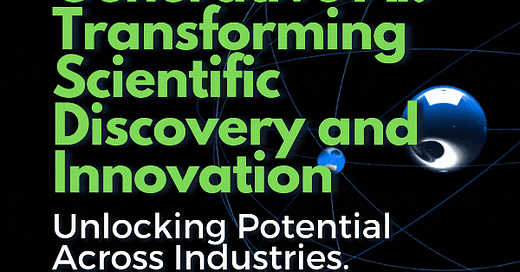Gen AI: Transforming Scientific Discovery and Innovation.
Unlocking Potential Across Industries.
Welcome to Silicon Sands News, read across all 50 states in the US and 111 countries.
We are excited to present our latest editions on how responsible investment shapes AI's future, emphasizing the OECD AI Principles. We're not just investing in companies. We're investing in a vision where AI technologies are developed and deployed responsibly and ethically, benefiting all of humanity.
This week, we will explore The Revolutionary Impact of Generative AI on Scientific Discovery.
Let’s Dive Into It . .
TL;DR:
Generative AI is not new—it has been active in scientific fields long before ChatGPT made headlines. However, its recent leaps in performance are now revolutionizing multiple R&D domains, including drug discovery, materials science, climate science, -omics research, and chemistry. By drastically cutting the time needed for experimentation and analysis, generative AI can slash costs, uncover novel breakthroughs, and drive targeted innovation in areas that once required extensive manual …
Keep reading with a 7-day free trial
Subscribe to Silicon Sands News to keep reading this post and get 7 days of free access to the full post archives.





